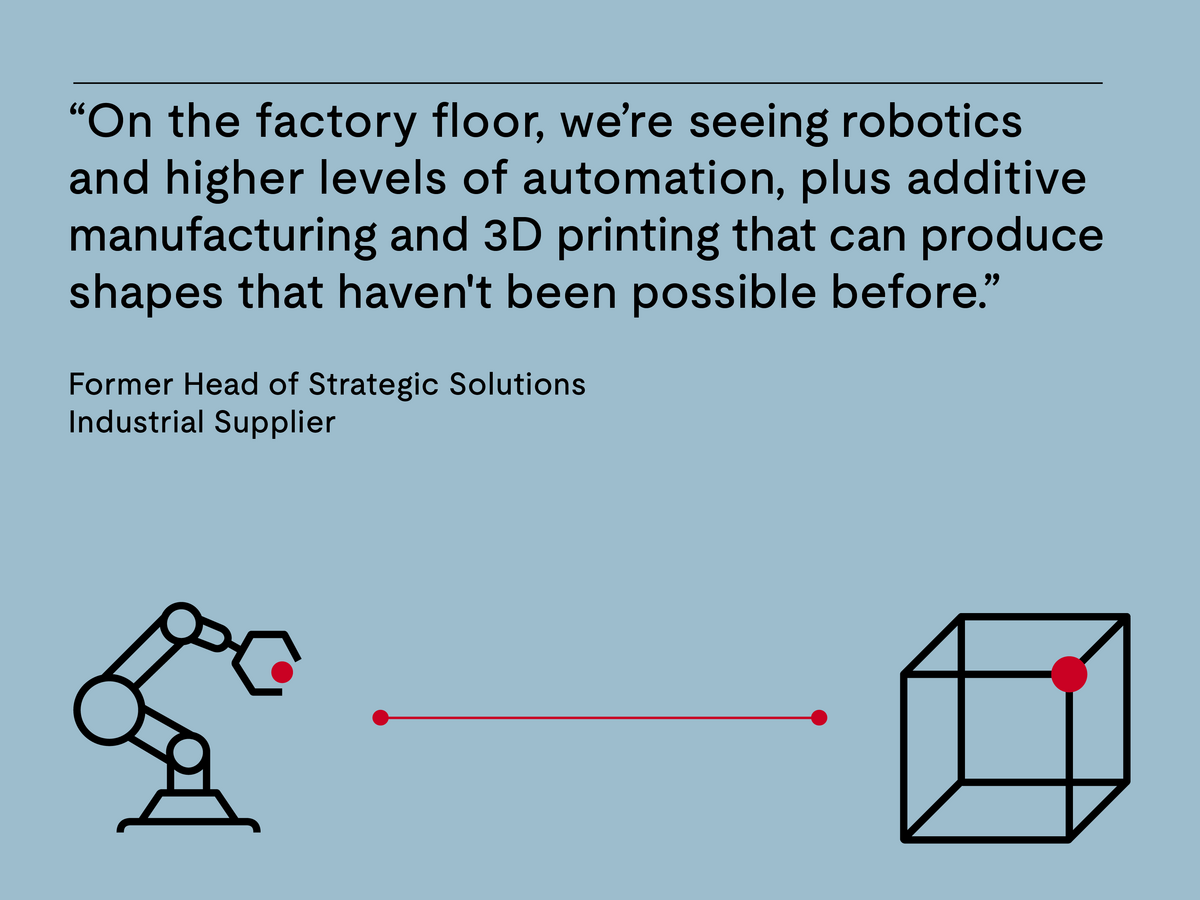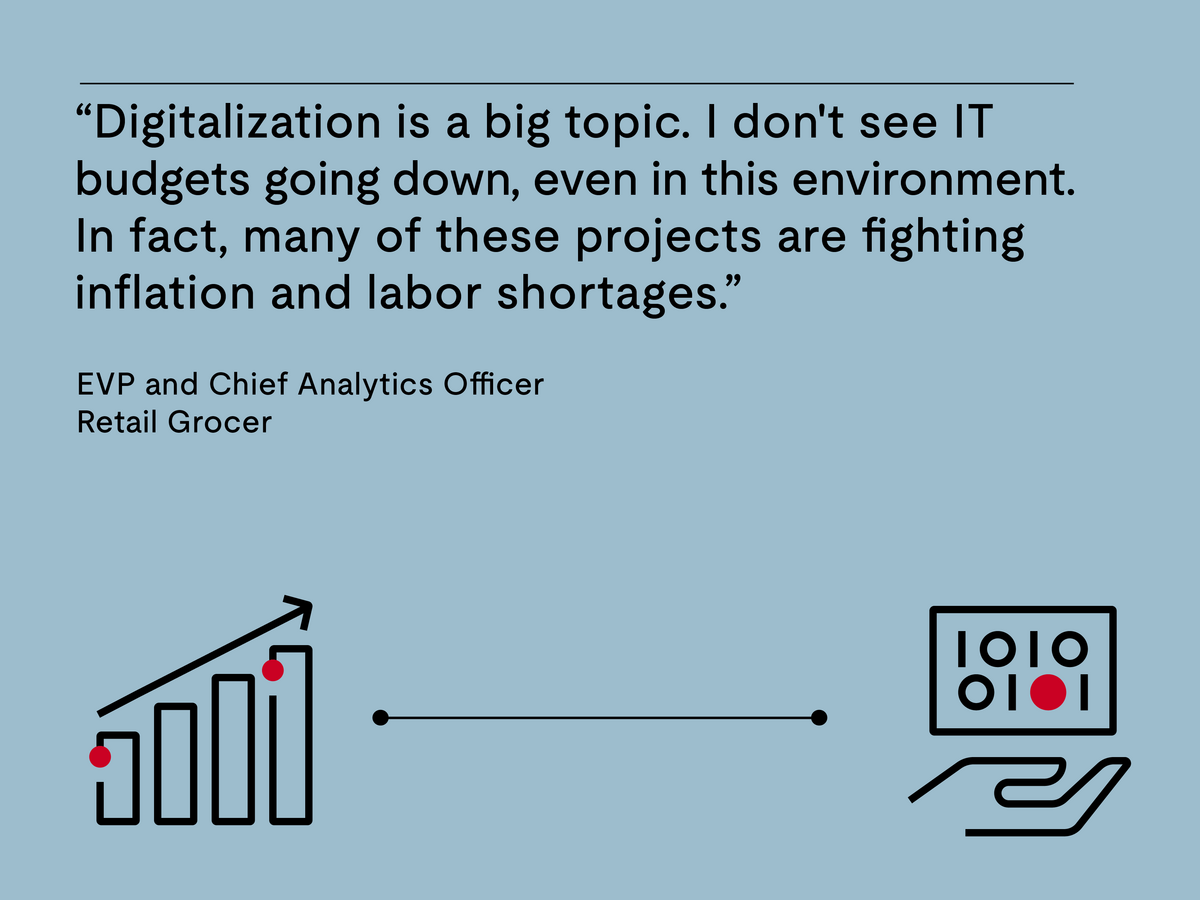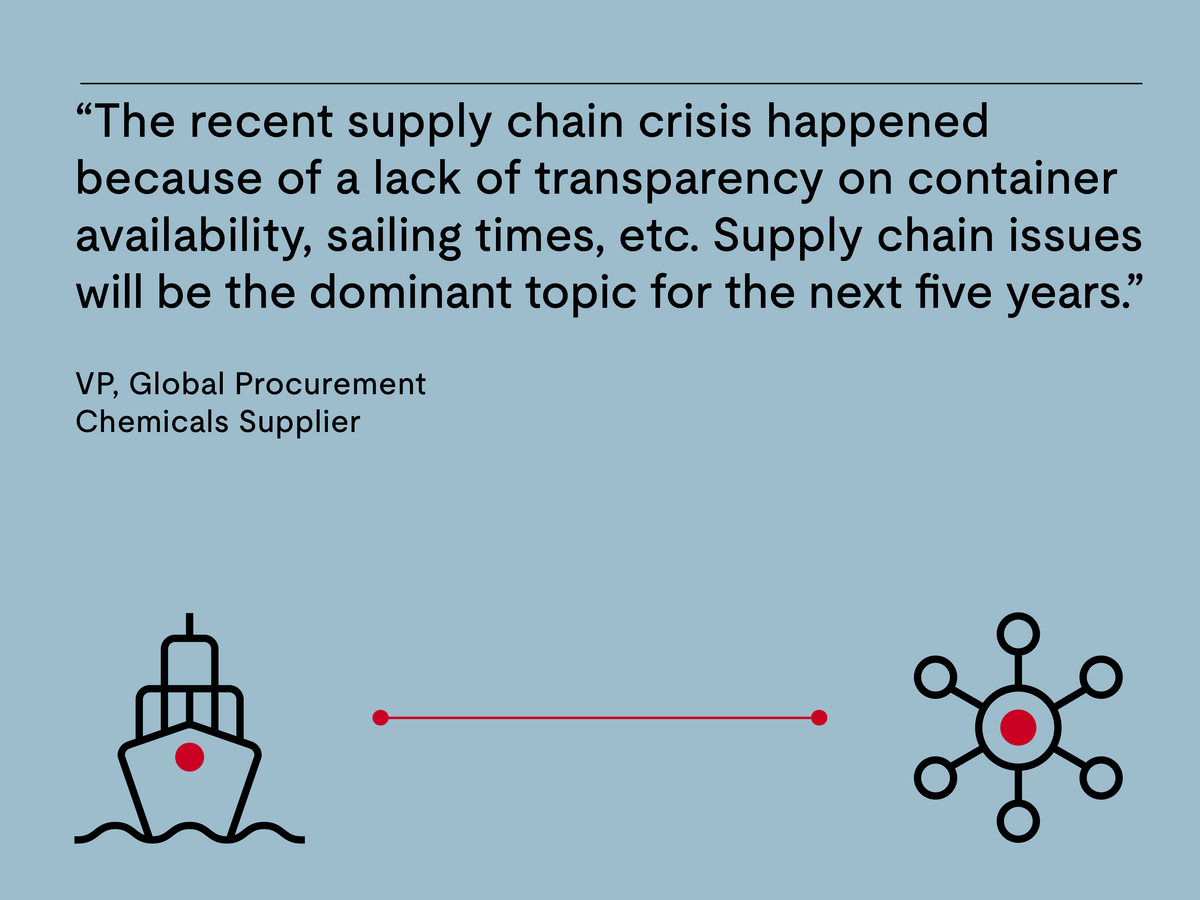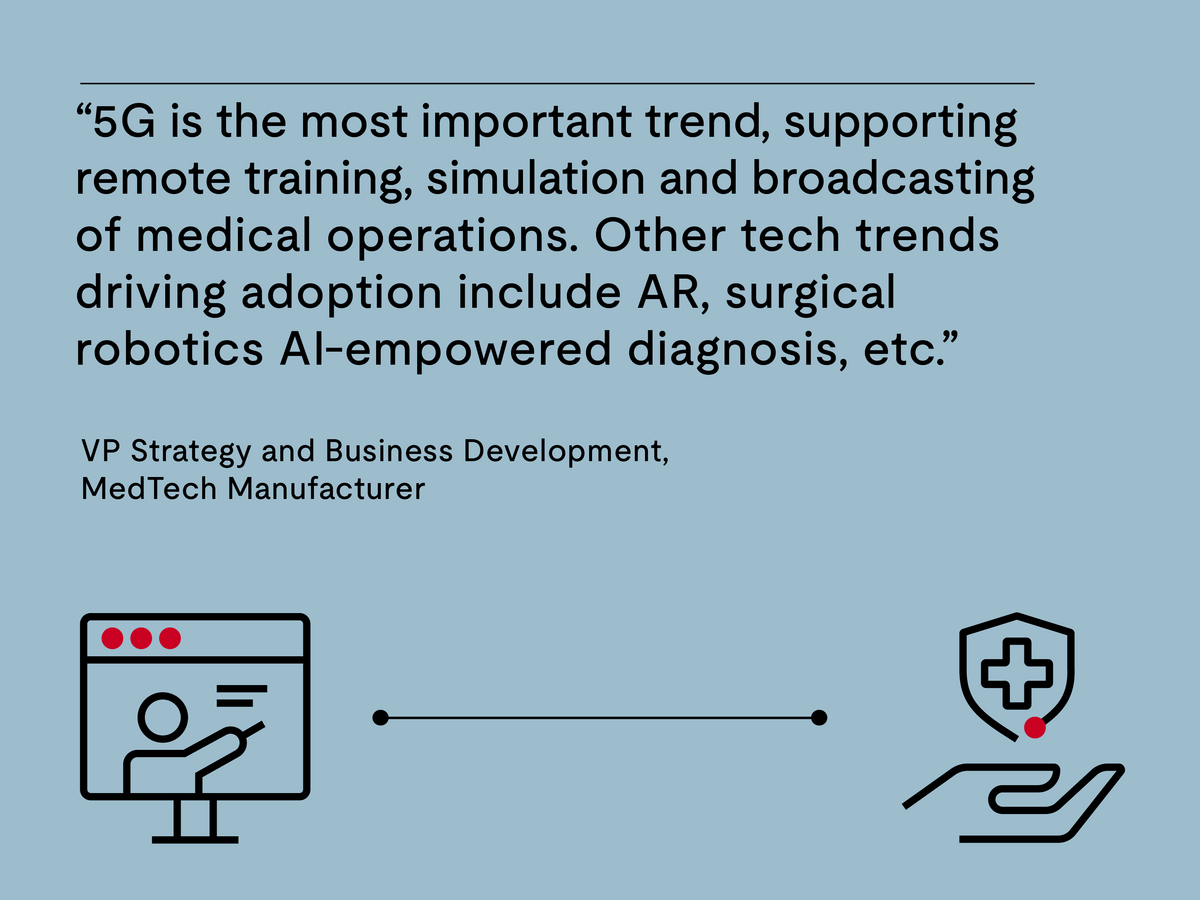We polled senior executives in an array of industries around the world to identify top-of-mind challenges and opportunities in IoT/connectivity. Explore these findings and understand more about these emerging issues.
Industrial & Automotive
Leaders in the industrial and automotive space are currently feeling the pain from these IoT/connectivity factors:
Tackling geopolitical challenges: Conflicts around the globe require manufacturers to consider alternative energy sources and make real progress toward limiting consumption.
Monitoring regulatory compliance: The evolving regulatory environment may also soon include reckoning with developing EU positions on artificial intelligence.
Growing a nimble business: Many hardware vendors and product manufacturers taking a step into the software world aren’t always prepared to compete in this different business model.
Mastering supply chain challenges: Core components, including sensors and microchips, have been impacted by shortages and logistics problems, leading to massive backlogs.
What industrial and automotive leaders are excited about:
The promise of AI: 56% of industrial IoT apps are now employing Artificial Intelligence (AI) tools, up from 39% just the year before.
Robotics on the rise: Unwilling to pay higher wages, manufacturers seek to replace human labor with robots, now available for rent or robotics-as-a-service programs.
Data drives performance: Predictive maintenance is becoming more effective through more detailed data sets, digital twins, high-quality headsets and Augmented reality (AR) and Virtual Reality (VR) tools.
Real-time monitoring: Environmental sensors collect data, detect changes and foster more timely decision-making.
Retail
We polled retail industry professionals to hear about the IoT/connectivity challenges they’re facing today:
Uneven broadband access: Stores in rural or underserved areas might suffer from a lack of high-speed or high-quality connectivity.
Limitations from regulation: Data privacy rules across Europe may prevent cameras used in loss prevention, inventory management and more.
Hackers find a way: Retailers are vulnerable through all kinds of connected systems, from warehouses to the store floor.
Boost margins through tech: IoT/connectivity improvements can help reduce labor needs in challenging hiring markets.
But here’s how retail leaders are using IoT/connectivity to address these pain points throughout their operation:
In the warehouse: AI, sensors and robots can reduce energy usage, forecast demand and use human labor more efficiently — especially in today’s e-commerce world.
In transit: Retailers are looking at deliveries via drone and autonomous vehicles, using sensors to ensure temperatures are maintained.
In the store: There are a lot of possibilities here, from self-checkout to paperless receipts, to dynamic electronic signage and info rich QR codes, environmental sensors and more.
Chemicals
Global chemical manufacturers face significant issues and are under intense pressure to make changes.
Fuel availability and costs: As natural gas prices have escalated due to geopolitical conflicts, the chemicals industry is under intense pressure to identify alternatives.
Supply chain pain: COVID disruptions are continuing to challenge the industry with shortages and delays.
Cyber safe and secure: Hackers present challenges in factories — to worker safety, vendor information and sensitive IP.
These technology approaches are helping get a handle on these pain points:
Effective labor use: By adding process automation enhancements, manufacturers can create safer environments for high-skilled workers.
Constant vigilance: High-quality remote monitoring technology allows for more centralized monitoring in facilities, wherever, whenever.
Supply chain visibility: Due to pandemic and geopolitical disruptions, real-time monitoring of supply chain activities is a must.
MedTech
When it comes to medtech and healthtech, security is paramount. Here are some of the specific issues manufacturers are battling:
Uneven technology adoption: The clinical environment is slower to adopt new tech than consumer healthcare, resulting in a disconnected ecosystem.
Regulatory landscape: Market fragmentation, scaling challenges and varying government regulations have resulted in a lack of unified standards and protocols.
Real cost concerns: Disconnected systems and fragmented regulations lead to added operational and maintenance costs as providers struggle to link data.
Data protection and privacy: A cyberattack can take down entire healthcare networks. Plus, conflicting parties often disagree as to how to protect patient data integrity.
Medtech manufacturers are embracing these technology advancements:
Hospital and clinical improvements: The investments center around connecting data sets and high-definition video tools or supporting customized care for more patients.
Medical equipment initiatives: Industry consolidation standardizes software choices and more user data collected. Also, enhanced connectivity supports remote customer service.
Wearables enhancements: Lower-cost tech is growing in popularity and efficacy. They can support better patient outcomes, help avoid re-admission and achieve closed-loop outcomes.







